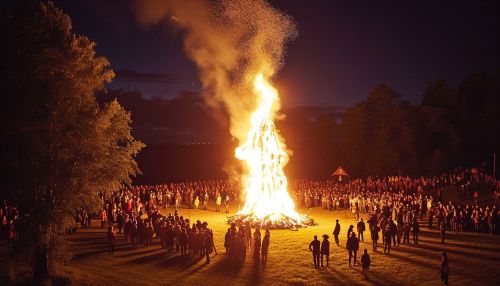Walpurgis Night
Origins and History
Walpurgis Night, also known as Walpurgisnacht, is a traditional Northern and Central European festival that takes place on the night of April 30 to May 1. The festival, which is named after the Christian saint Saint Walpurga, has its roots in ancient pagan customs, superstitions, and folk traditions.


The earliest celebrations of Walpurgis Night can be traced back to the pre-Christian era in the Germanic regions of Europe. During this time, it was believed that the spirits of the dead roamed the earth and that magic was most potent. Walpurgis Night was seen as a time when the barrier between the human and supernatural world was thinnest, and it was marked with rituals and ceremonies designed to protect people from malevolent influences.
With the spread of Christianity, these pagan traditions were incorporated into Christian practices. The festival was named after Saint Walpurga, an English missionary who was canonized on May 1, 870. Over time, Walpurgis Night became associated with witches and witchcraft, leading to the tradition of lighting bonfires to ward off evil spirits and witches.
Celebrations and Traditions
Walpurgis Night is celebrated in various ways across different regions. In Germany, it is often marked with bonfires, dancing, and singing. In Sweden, it is a de facto half-holiday, with celebrations that include singing traditional spring folk songs and lighting bonfires. In Finland, it is one of the four biggest holidays of the year and is celebrated with large carnivals and festivities.
In many regions, it is traditional to dress up as witches and devils and engage in activities such as trick-or-treating, similar to the modern Halloween tradition. The tradition of lighting bonfires continues in many areas, believed to protect against evil spirits and witches.
Cultural Significance and Influence
Walpurgis Night has had a significant influence on popular culture and has been referenced in various forms of media. It is often associated with witches and witchcraft, and has been depicted in literature, film, and music. For example, it is featured in Goethe's "Faust" and in Bram Stoker's "Dracula".
In addition to its cultural influence, Walpurgis Night also has a significant sociocultural role in the regions where it is celebrated. It serves as a community bonding event and a celebration of the arrival of spring.
